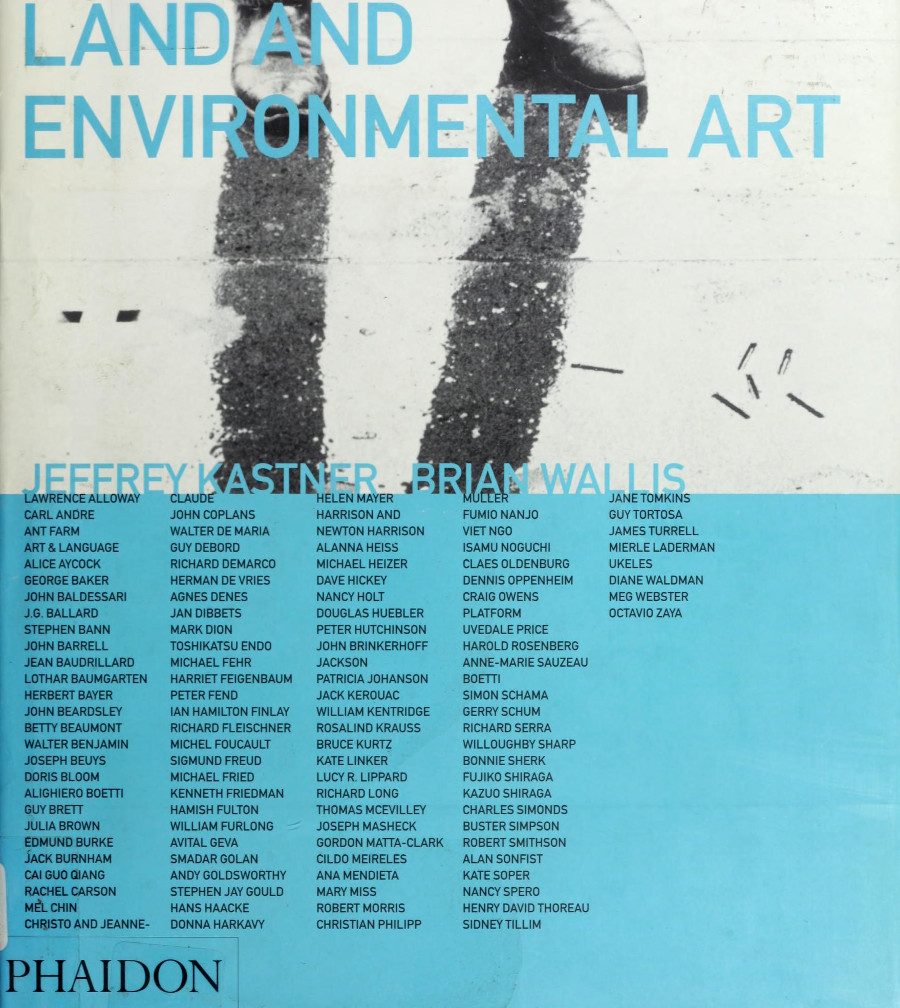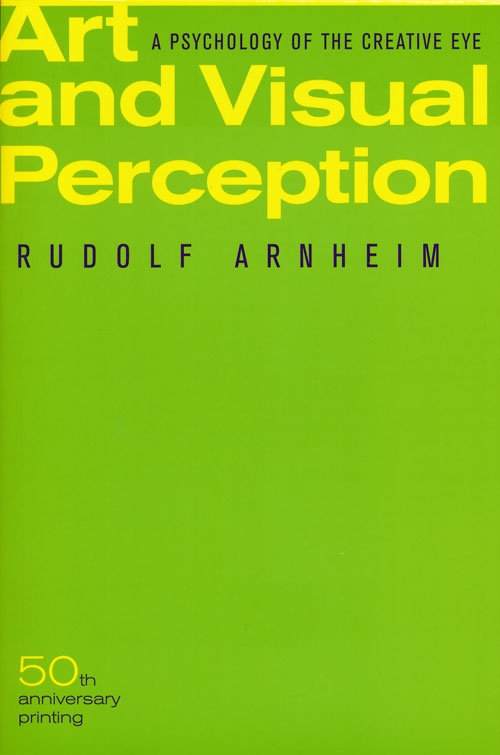Jeffrey Kastner, Brian Wallis (eds.): Land and Environmental Art (1998)
Filed under book | Tags: · aesthetics, architecture, art, art history, art theory, ecology, environment, land art, landscape, nature, sculpture

“The traditional landscape genre was radically transformed in the 1960s when many artists stopped merely representing the land and made their mark directly in the environment. Drawn by the vast uncultivated spaces of the desert and mountain as well as post-industrial wastelands, artists such as Michael Heizer, Nancy Holt and Robert Smithson moved the earth to create colossal primal symbols. Others punctuated the horizon with man-made signposts, such as Christo’s Running Fence or Walter de Maria’s Lightning Field. Journeys became works of art for Richard Long while Dennis Oppenheim and Ana Mendieta immersed their bodies in the contours of the land.
This book traces early developments to the present day, as artists are exploring eco-systems and the interface between industrial, urban and rural cultures.”
Edited by Jeffrey Kastner
Survey by Brian Wallis
Publisher Phaidon Press, 1998
ISBN 0714835145, 9780714835143
304 pages
Review: Boettger (CAA.Reviews, 1999).
PDF (117 MB, no OCR)
For more on land art see Monoskop wiki (includes a select bibliography and collection of links to online documentation of the works by early land artists).
Comment (0)Alex Potts: Flesh and the Ideal: Winckelmann and the Origins of Art History (1994)
Filed under book | Tags: · antiquity, archaeology, art, art history, art theory, biography, enlightenment, sculpture

“Johann Joachim Winckelmann (1717-1768), one of the most important figures ever to have written about art, is considered by many to be the father of modern art history. This book is an intellectual biography of Winckelmann that discusses his magnum opus, History of the Art of Antiquity, in the context of his life and work in Germany and in Rome in the eighteenth century.
Alex Potts analyzes Winckelmann’s eloquent account of the aesthetic and imaginative Greek ideal in art, an account that focuses on the political and homoerotic sexual content that gave the antique ideal male nude its larger resonance. He shows how Winckelmann’s writing reflects the well-known preoccupations and values of Enlightenment culture as well as a darker aspect of Enlightenment ideals–such as the fantasy of a completely free sovereign subjectivity associated with Greek art. Potts explores how Winckelmann’s historical perspective on the art of antiquity both prefigures and undermines the more strictly historicizing views put forward in the nineteenth century and how his systematic definition of style and historical development casts a new light on the present-day understanding of these notions. According to Potts, Winckelmann goes well beyond the simple rationalist art history and Neoclassical art theory with which he is usually associated. Rather, he often seems to speak directly to our present awareness of the discomforting ideological and psychic contradictions inherent in supposedly ideal symbolic forms.”
Publisher Yale University Press, 1994
ISBN 0300087365, 9780300058130
302 pages
via satranc112
Reviews: Christopher Reed (Journal of the History of Sexuality, 1996)
Dorothy Johnson (Eighteenth-Century Studies, 1996)
PDF (27 MB)
Comment (0)Rudolf Arnheim: Art and Visual Perception (1954–) [EN, RU, PL, RO, ES, BR-PT]
Filed under book | Tags: · architecture, art theory, colour, kinesthesia, light, movement, music, painting, perception, perspective, physiology, psychology, sculpture

“Since its publication in 1954, this work has established itself as a classic. It casts the visual process in psychological terms and describes the creative way one’s eye organizes visual material according to specific psychological premises. In 1974 this book was revised and expanded, and since then it has continued to burnish Rudolf Arnheim’s reputation as a groundbreaking theoretician in the fields of art and psychology.”
Publisher University of California Press, 1954
Expanded and revised edition, 1974
ISBN 0520243838
508 pages
Interview with the author (Uta Grundmann, Cabinet, 2001)
Publisher (EN)
Art and Visual Perception (English, 1954/1974, 26 MB)
Iskusstvo i vizualnoe vospriyatie (Russian, trans. V.N. Samokhin, 1974/2000, DJVU, no OCR)
Sztuka i percepcja wzrokowa (Polish, trans. Jolanta Mach, 1978, 24 MB, no OCR, via nuitienne)
Arta si perceptia vizuala (Romanian, trans. Florin Ionescu, 1979, 35 MB, no OCR, via)
Arte y percepción visual (Spanish, trans. María Luisa Balseiro, 1979/1997, 43 MB)
Arte e percepção visual (Brazilian Portuguese, trans. Ivonne Terezinha de Faria, 1980/2005)

